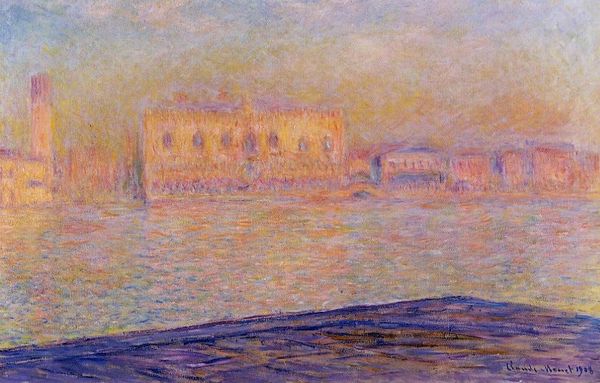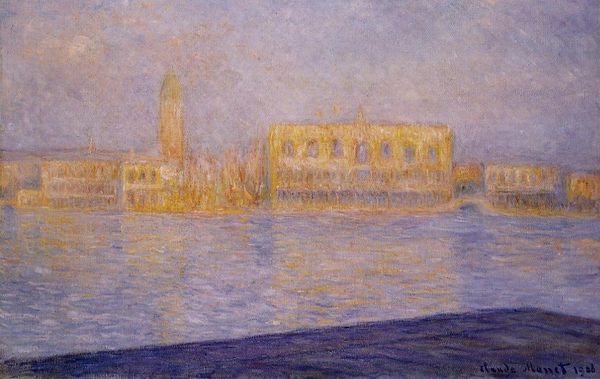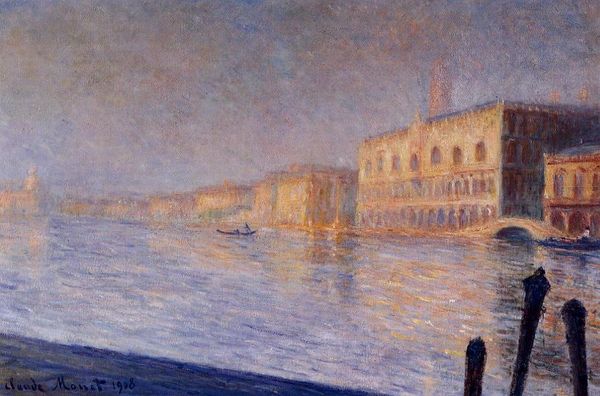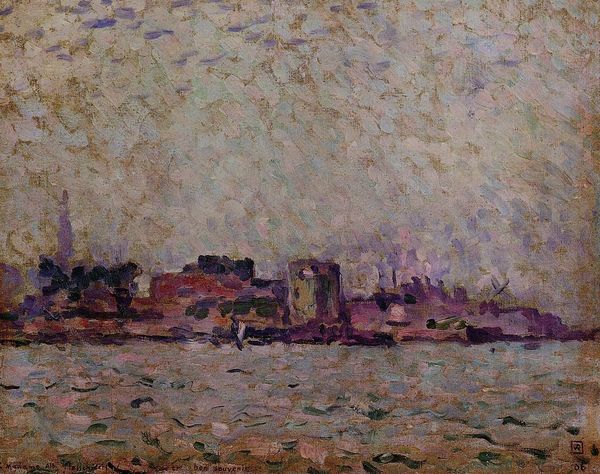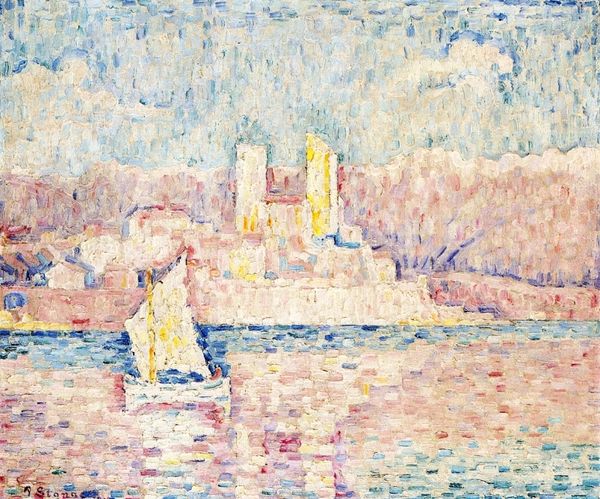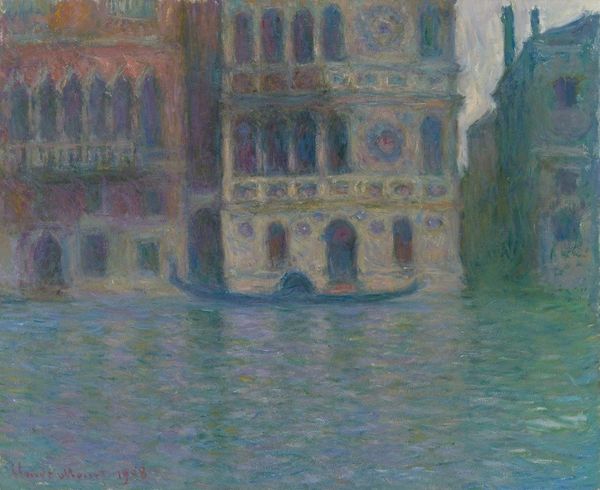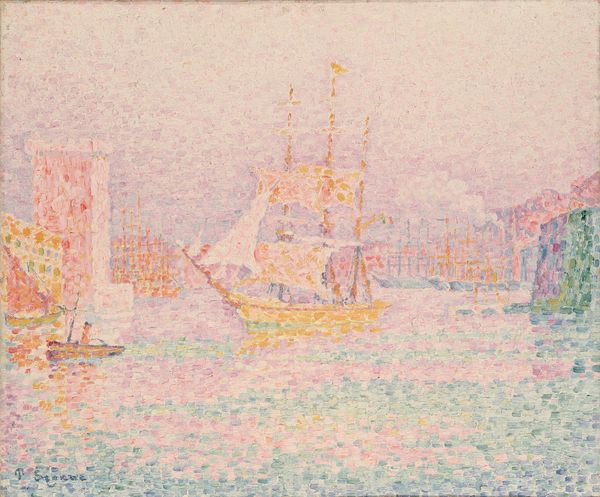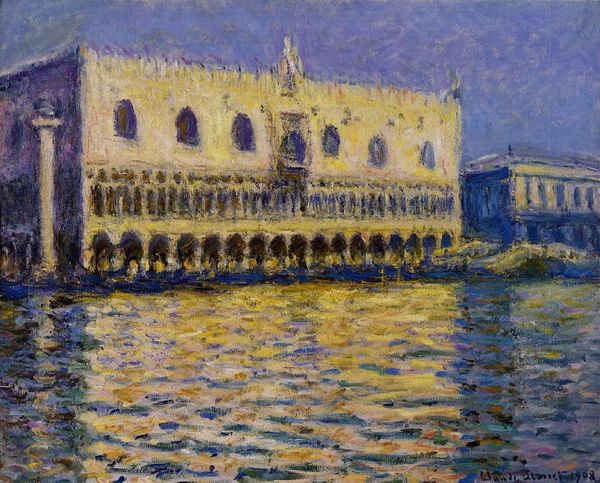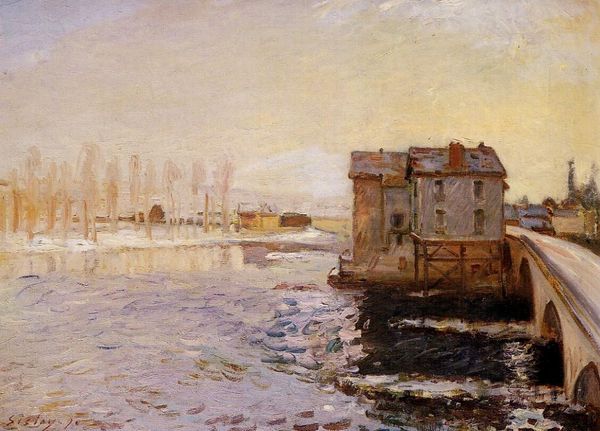
Copyright: Public domain
Curator: Oh, isn't that dreamlike? Like a watercolor that's been left out in the rain. I see muted colors, shimmering water, and hazy buildings barely emerging from the mist. What is it? Editor: This is Claude Monet's "The Doges' Palace Seen from San Giorgio Maggiore 3," painted in 1908. As you've intuited, it’s oil on canvas, a study in atmosphere really, part of his series capturing Venice. It comes rather late in Monet’s long career exploring the subtleties of light. What might be compelling is his move into architectural subjects. Curator: Architectural subjects, you say...and what’s compelling there? Editor: Well, if you look at the painting, there’s this undeniable tension between the solid presence of the Doge's Palace and the shimmering impermanence of the water and light. He really breaks down those boundaries, right? Even as he reproduces the Palace, his strokes remind us we are still viewing its essence refracted through weather. I'm curious if there's an implied commentary there about the state of Venetian culture itself. Curator: Hmmm… a kind of dissolving grandeur? I love that reading! The surface, too, becomes significant – you can almost feel the salt air clinging to the buildings, aging and eroding them over time. Even the way he layers the oil paint, like geological stratification. Editor: Right! It's not just an image; it's a record of a moment, a testament to the material processes shaping both the canvas and the city itself. We know these late period works, were a struggle to realize due to Monet's vision deteriorating due to cataracts. The art materials themselves begin to dictate something very vital. Curator: Exactly! Maybe there is something deeply human about embracing how time inevitably etches its mark – not just on buildings but on our vision, on art itself. Editor: I agree. This piece reminds me, in that respect, how materials often tell as important of a story, sometimes, as their makers, if we know where to find their truth. Curator: And how wonderful it is that Monet has provided just that map for us.
Comments
No comments
Be the first to comment and join the conversation on the ultimate creative platform.
